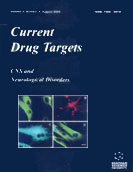Abstract
The early demonstration of chlorpromazine efficacy in schizophrenia and its subsequent identification as a dopamine receptor antagonist, established the only known mechanism for antipsychotic development to date. By extension, it is easy to hypothesize that any mechanism shown to reduce dopamine-mediated transmission in brain will have antipsychotic properties. The evaluation of partial dopamine agonists for antipsychotic efficacy and their application in the treatment of psychosis has derived from this background. Partial dopamine agonists at the D2 dopamine receptor, have high affinity for that receptor, but reduced intrinsic activity. These agonists have higher affinity for the presynaptic autoreceptor than for the postsynaptic receptor. Hence, these compounds reduce dopamine synthesis and release through an agonist action at the dopamine autoreceptor. Moreover, the agonists have lower intrinsic activity at the postsynaptic receptor than its natural ligand dopamine. Therefore, they diminish the do paminergic signal at postsynaptic sites as well through delivering a reduced message; this component of drug action becomes more prominent the lower the intrinsic activity of the drug. Several partial dopamine agonists have been evaluated in schizophrenia. One of them, aripiprazole, is nearing approval for marketing. With partial dopamine agonist treatment, advantages should accrue to schizophrenia treatment in the areas of affect control and cognitive performance.
Keywords: partial dopamine agonists, dopaminergic stabilizers, psychosis, therapeutics, intrinsic activity, psychopharmacology, dopamine, schizophrenia, aripiprazole
 10
10

















